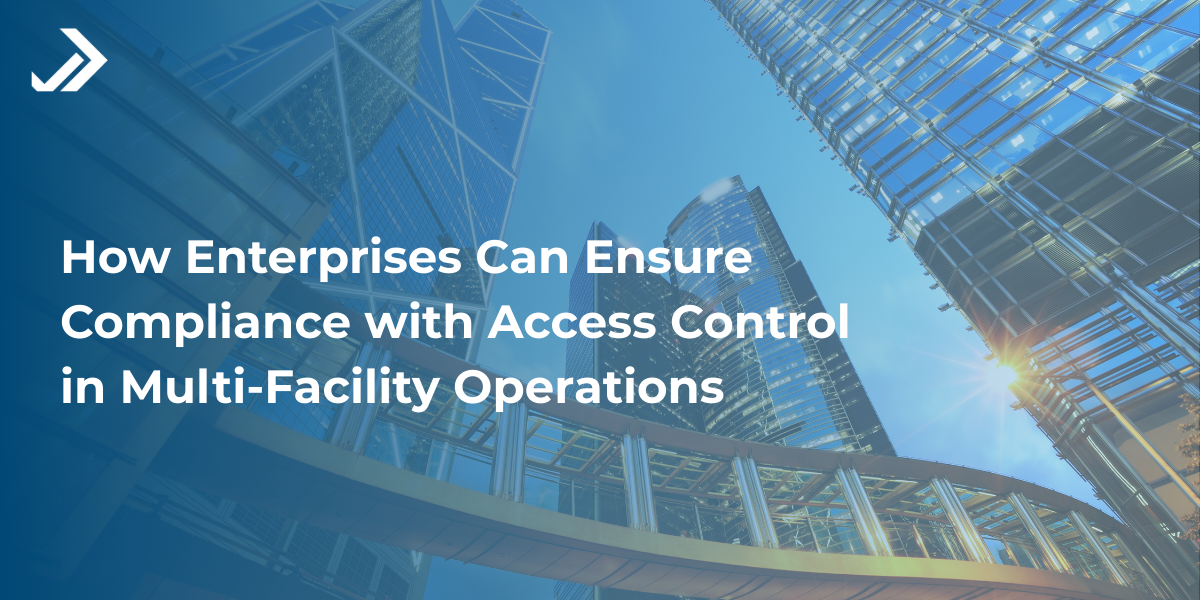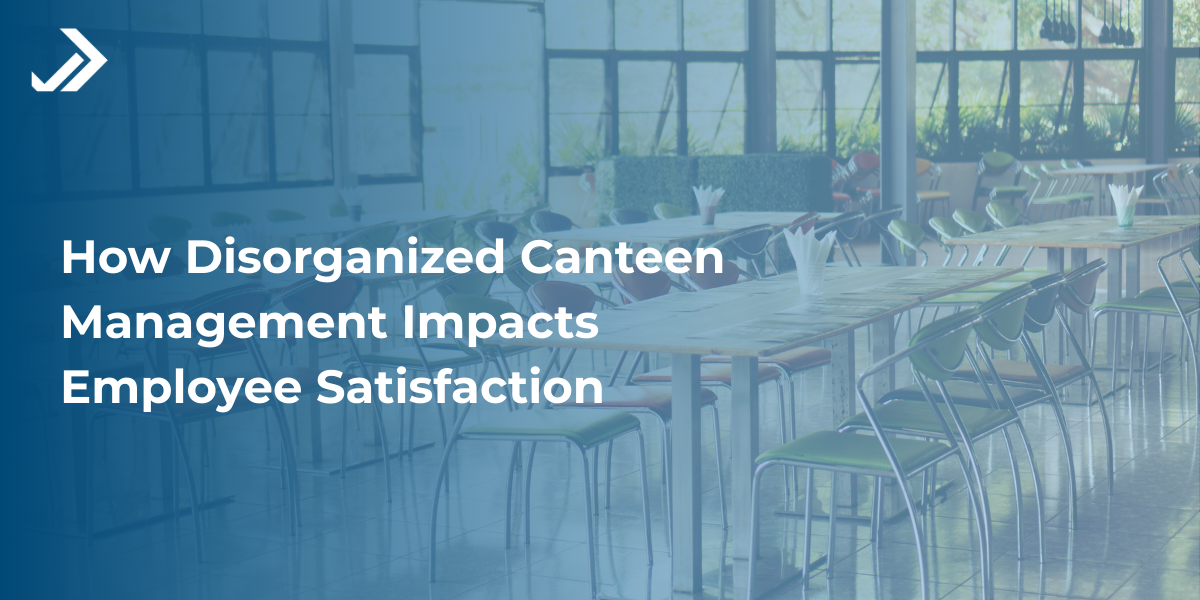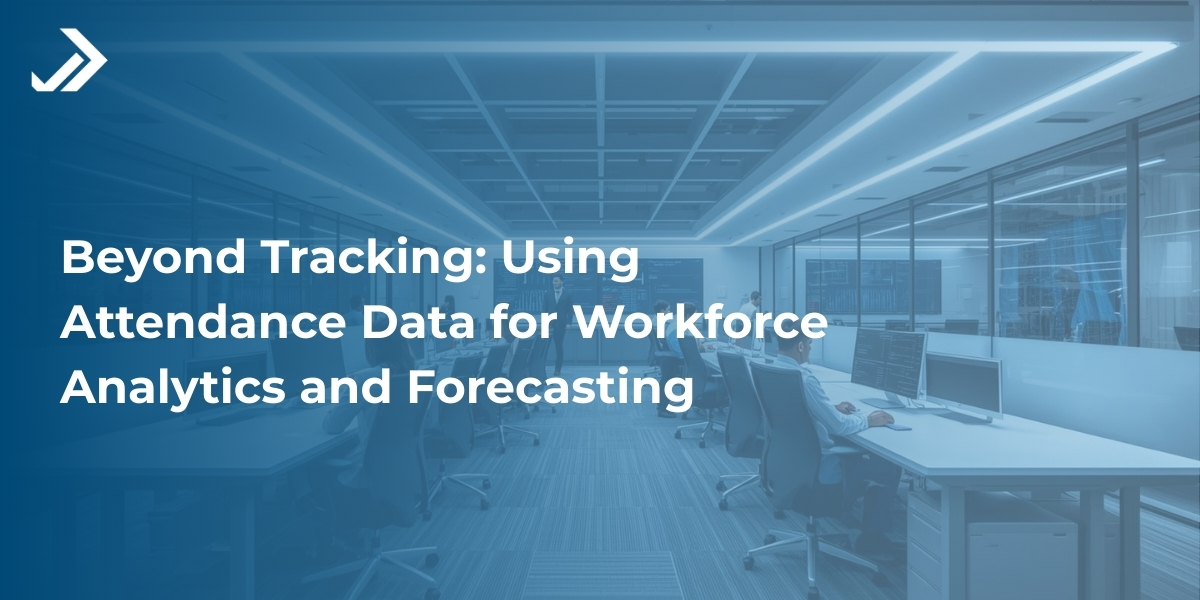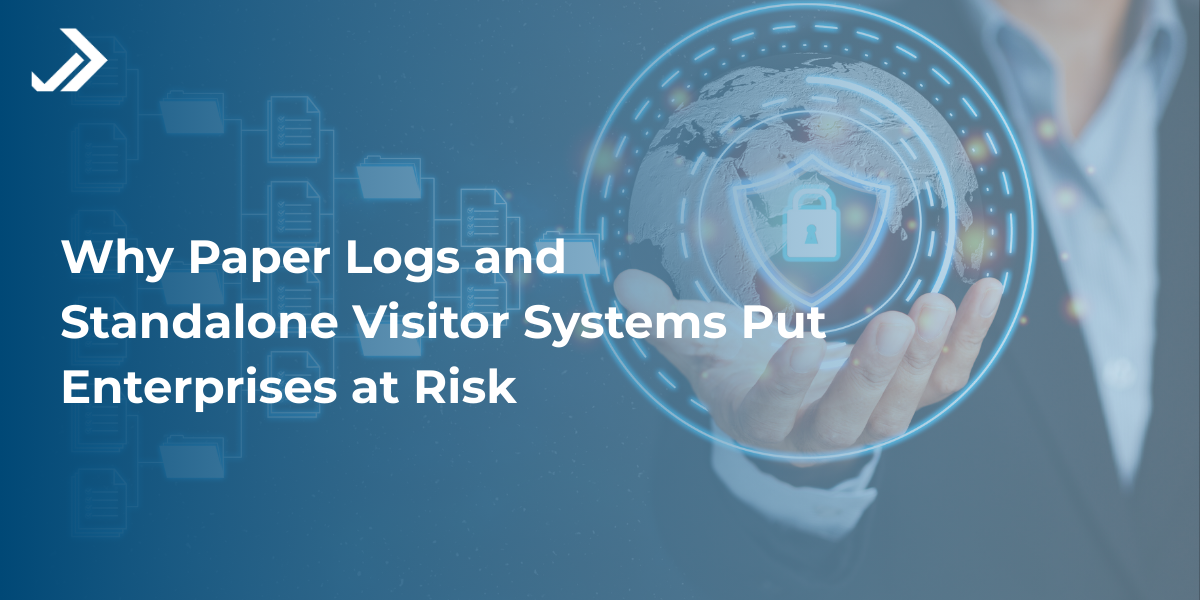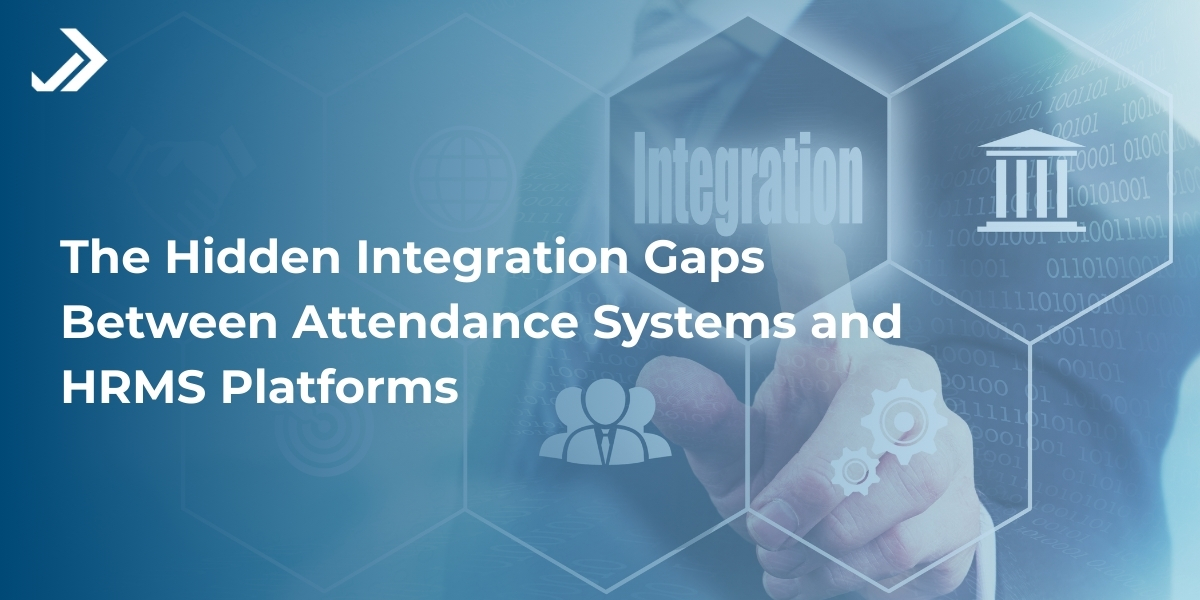

Author : Marketing Team | Follow us on LinkedIn:
25 Jun, 2025
What to Look for in Visitor Management Software for Enterprise Security
Table of Contents
In a world where security breaches make headlines and reputational damage can happen in minutes, are you still using a paper logbook to track who walks into your premises?
That clipboard at the front desk won’t protect your data, people, or property.
Modern enterprises need more than just a sign-in sheet. They need a Visitor Management System that not only improves front desk operations but also acts as the first line of defense against security threats.
In this guide, we’ll explore what makes an effective Visitor Management Software and why upgrading to a digital solution is no longer optional—it’s mission-critical.
Why Enterprises Must Upgrade from Paper to Digital Systems
Enterprise-grade security is no longer just about locked doors and surveillance cameras. It’s about controlling who comes in, when, where, and why. A Visitor Management System does exactly that, digitizing the entire check-in process, creating traceable records, and streamlining access without compromising on compliance.
Whether you’re a corporate office, R&D facility, hospital, or data center, investing in robust Visitor Management Software ensures:
- Improved operational efficiency
- Real-time monitoring of guest movement
- Reduced manual errors and human dependency
- Compliance with evolving privacy regulations
- Enhanced visitor experience
Let’s break down the features that matter most when selecting your enterprise VMS.
Smart Registration and Streamlined Check-In
Modern Visitor Management Software should provide seamless registration options that cater to both scheduled and walk-in guests. Pre-registration enables hosts to share invites in advance, reducing waiting times. Upon arrival, visitors should be able to check in through self-service kiosks, tablets, or even mobile devices. Leading systems support customizable input fields, allowing you to capture relevant visitor details securely. Touchless check-in options such as QR code scanning, SMS OTP, or facial recognition further enhance convenience and hygiene, which is especially important in high-traffic or health-sensitive environments.
Efficient Badge and Pass Management
An enterprise-ready solution must ensure that every visitor is easily identifiable. The system should allow instant badge printing with customizable layouts, including color codes, barcodes, logos, and access levels.
These badges not only facilitate visual verification but also help monitor movement within the facility. Integration with barcode scanners enables quick check-out, ensuring that exit records are as precise as entry logs.
Alerts, Notifications, and Real-Time Host Engagement
Keeping stakeholders informed is essential for operational flow and guest experience. The software should automatically notify hosts via SMS or email when their guests arrive. It should also handle cancellations or no-shows with ease.
Advanced Visitor Management Systems offer emergency broadcast features to alert everyone on-site about critical events. VIP visitor alerts can also prepare staff in advance for high-profile guests, ensuring they receive prompt attention.
Secure Movement and Controlled Access
A key function of any enterprise Visitor Management Software is controlling where a visitor can go. The system should integrate with your access control infrastructure to allow or restrict entry into specific zones.
At checkpoints, biometric or barcode validation ensures that only authorized individuals pass through. Watchlists or blacklists must be enforceable at entry points, instantly flagging any banned or high-risk individuals. Time-bound access credentials add another layer of control by automatically deactivating expired passes.
Seamless Integration and Scalability
To serve the needs of a growing enterprise, the software must integrate effortlessly with existing infrastructure. This includes linking with biometric systems, Active Directory or SSO platforms, access control systems, and HR tools.
Whether you prefer a cloud-based setup for remote management or an on-premise deployment for tighter control, ensure the solution can scale across multiple locations without performance issues.
Compliance, Privacy, and Data Protection
When handling sensitive visitor data, compliance isn’t optional—it’s mandatory. Choose a system that offers end-to-end data encryption, detailed audit trails, and role-based access to ensure only authorized personnel can view or edit records.
To comply with laws like GDPR or PDPA, your visitor management system should include visitor consent forms, configurable data retention policies, and automatic purging mechanisms. These features not only protect your organization legally but also build trust with your visitors.
Final Thoughts: Choosing the Right Visitor Management System
Selecting the right Visitor Management Software goes beyond ticking feature boxes—it’s about finding a system that aligns with your enterprise’s security goals, compliance needs, and operational scale. Look for solutions that offer:
- Contactless and mobile-first check-ins
- Real-time host and visitor notifications
- Access control and biometric integrations
- Cloud or on-premise deployment options
- Full compliance with privacy regulations
Before you commit, consider launching a pilot project. Compare vendors based on performance, user interface (UI)/user experience (UX), support, and integration capabilities. A reliable Visitor Management System is more than a security tool—it’s a strategic asset that enhances brand experience and operational control.


